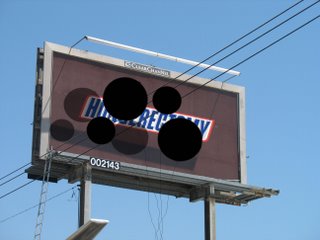Commercial messaging inserts itself into almost every nook and corner of our lives; it is everywhere, and the designer’s touch marks the most banal aspects of everyday life. What impact do commercial messages have on our culture and what type of system do they engender and then reiterate?
Designers are image makers and mass media producers. In order to be effective communicators, they must consider the wants and needs of members of society. Enormous amounts of time, money and energy are expended by commercial companies to study what sells. Has culture grown dependent on responding to the messaging in order to maintain identities of inclusion? In turn, it seems that individuals are increasingly responding to commercial messaging as the primary way to form their own sense of identity. Ironically, our sense of individuality has been formed by the habits of mass consumption. Individuals as audience members face identity issues every time they are confronted with commercial messaging. As they approach the partitions in their environment questions of identity are produced. An audience decodes the contents of commercial messaging in order to make meaning and contribute to their sense of self. Designers produce the coding of commercial impressions with authority in what is effective, therefore, the role of the designer in the creation of a public message needs to be addressed. What are their responsibilities in referencing the audience‘s system of beliefs and processes of self definition? What is the responsibility of the designer when s/he references the common beliefs and identity configurations of the audience?
A trend in advertising and branding is the allegorical appeal to fantasy and wonder that further entices an audience into consumption. Design efforts work in collusion with society that has increasingly based itself on the practice of consumption that in turn defines itself in terms of magical powers. Exploiting a naive belief in magic or wonder, the practice of advertising relies on what cultural theorists call the “magic system” where goods are held to have incredible power. Today, technological advancements efficiently produce “hyper-real” special effects and simulated realities that can easily entertain and seduce an audience. Advertisers are experts at crafting fantastic mythologies about the experience, knowledge, and insight the marketed products promise. Tales re-canted from the efforts of top notch creative teams create allegory and wonder, or open ended communications specifically designed to target a particular individual.
Would an understanding of how the framework for commercial impressions generate meaning assist an audience in constructively and creatively responding to those images? Today’s surplus of visual stimuli generates the need to develop new strategies for visual communications. Does a shift in perception need to occur before a personal viewpoint can be re-directed? Can an audience generate the ability to “overlook” interpretive forms that do not contribute seamlessly to their definition of self? Advertising’s ideological system, because of its powers of absorption needs to be understood and critically examined.




































